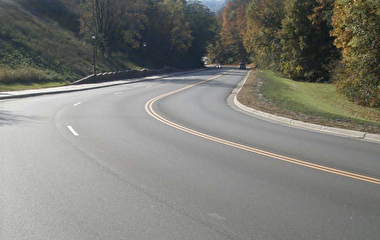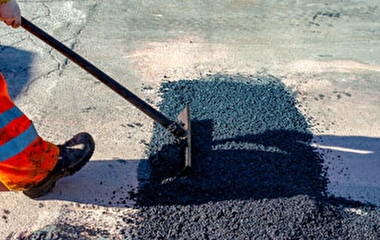Researchers in the Department of Civil, Environmental, and Geo- Engineering (CEGE) were granted a new patent last year for their innovative asphalt mixture formulas.
Developed by a team led by CEGE assistant professor Jia-Liang Le, the mixture formulas are part of ongoing U of M research efforts aimed at reducing low-temperature cracking—a major concern for asphalt pavements in cold regions.
The mixtures incorporate a unique powder made of graphene nano-platelets (GNP)—layers of carbon particles that are arranged in a honeycomb lattice and have superior mechanical and electrical properties—in the asphalt binder. Including GNP doubles the asphalt’s strength at cold temperatures and improves its strain tolerance and creep stiffness, helping to prevent low-temperature cracking.
“Although the cost of GNP-reinforced asphalt mixtures is slightly more expensive than some other asphalt mixtures, it allows for building a better, more durable product,” Le says. The cost of GNP could also drop in the future as production improves and the market grows.
In addition, the many benefits of GNP-reinforced asphalt may help outweigh these costs. For instance, GNP-reinforced asphalt requires fewer compaction cycles and can be compacted at lower temperatures than other pavements. According to the researchers, this can help improve construction speed and quality, potentially extend the construction season in cold climates, and result in compaction-related cost savings.
Potential applications of the GNP-reinforced asphalt mixtures include the construction of new pavements, rehabilitation of existing pavements with full-depth reclamation, and pothole repair. Using the GNP mixtures in new pavements would also allow agencies to include larger amounts of recycled materials, such as reclaimed asphalt pavement and reclaimed asphalt shingles, further cutting costs.
CTS provided initial funding for Le, who originally collaborated with researchers from the National University of Singapore on the use of GNP in concrete. This project inspired Le to conduct a second project funded by the National Cooperative Highway Research Program with fellow CEGE researchers Mihai Marasteanu and Mugurel Turos on the use of GNP in asphalt, which ultimately led to the new patent.
Le’s team is currently creating a computerized model that can provide inexpensive simulations of the new asphalt mixtures in a project funded by the Minnesota Department of Transportation. Using the model, the researchers are developing a design chart that provides information about the most effective GNP-reinforced asphalt mixes for use in different applications.



